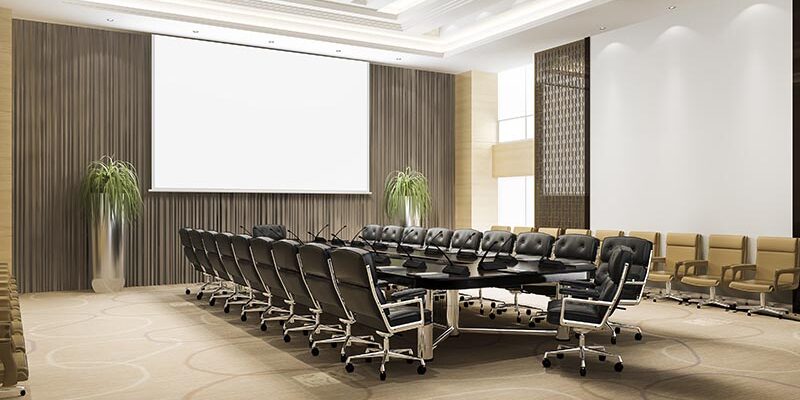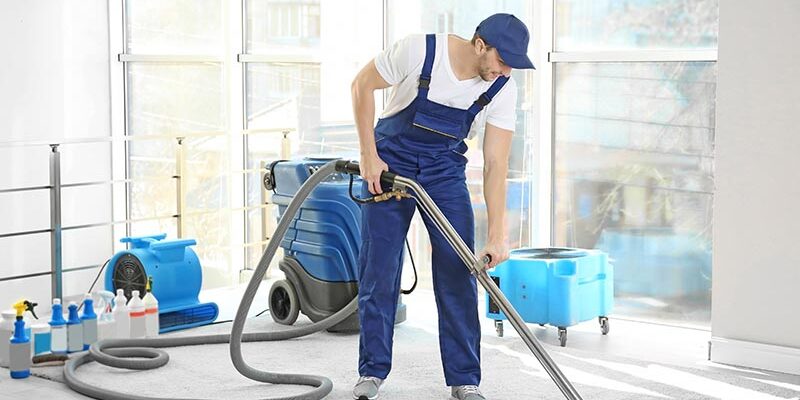Drying is in the balance

There is a common myth that high temperature alone is the driving force in drying materials.
Used alone, high temperatures will not dry materials and may lead to secondary, unintended damage. In order to achieve an efficient drying environment, temperature must be balanced with humidity control and airflow.
Balancing does not always mean equal; in some situations, airflow and humidity control play a more important role in the efficiency of the drying system. This is particularly true in the first 24 hours of drying.
Humidity, airflow and temperature
Humidity: Controlling humidity, or, to be precise, maintaining a vapor pressure differential, is very important in all stages of drying, though it is difficult in the later stages of drying.
Airflow: Adequate airflow is critical during the initial stages of the drying process. It plays a much smaller role in influencing evaporation near the end of structural drying.
Temperature: High heat, while beneficial for evaporation, may actually lead to the creation of more liquid water. Condensation can occur in unexpected areas and may cause secondary damage during the initial stages of drying. Higher temperatures in the materials during the later stages of the drying project are very useful. In fact, during the later stages of drying, adjusting the drying to focus more on heat in materials will accelerate drying.
To illustrate the potential for secondary damage caused by condensation when using heat, we first must understand that evaporation and condensation occur at the same time. It is only a question of which wins out. When we are drying a structure using a balanced drying system, evaporation wins out. We are constantly striving to maximize evaporation by adjusting the drying system; moving air movers to wet areas, adjusting, moving or changing dehumidifiers for the best performance and controlling heat (cooling or heating when appropriate).
Condensation under hardwood
Condensation occurs when the surface temperatures are below dew point. The potential for secondary damage due to condensation in interstitial cavities is very real.
To illustrate this point I took a piece of ¾-inch pre-finished oak flooring that was soaked in water until it reached a 24.5% moisture content as measured with a penetrating moisture meter. This was placed in a 135 degree Fahrenheit oven on a foil-covered baking rack. After 20 minutes the flooring achieved a surface temperature of 136 degrees. I removed the wood sample and the foil-covered rack and allowed them to cool. Within minutes the surface of the wood cooled to 98 and the foil had cooled to 79. But even at these relatively high temperatures, moisture had condensed on the foil under the wood. The moisture content of the wood remained at 24.5%. This is an example of how applying heat to materials without balancing humidity control and airflow can lead to condensation.
Condensation inside wall cavities
In the same way that condensation can form under wood when only the surface is heated, it is also likely that condensation can form in stud cavities or between layers of materials when heat is applied to only one surface.
To illustrate this point, I built a demonstration stud wall with drywall on one side drywall and Plexiglas on the other. This assembly has very similar characteristics in terms of permeability to many exterior walls found in residential construction. After flooding the interior of the wall from above, I heated the drywall side with a heat lamp. This produced rapid evaporation in the drywall side and significant condensation formed inside the cavities. However, when I added airflow using an inter-air dryer, the condensation disappeared. The combination of heat and airflow will help to prevent secondary damage.

Condensation inside cavity
But wait, what about the clothes dryer? Doesn’t the clothes dryer use heat to dry clothing? True, but it also balances heat with airflow and air exchange to provide humidity control. Also, the heat is applied to all surfaces of the clothing though the tumbling action. Evaporation wins out over condensation.
Additionally, collateral damages are controlled in a clothes dryer. All evaporating water vapor is contained in a metal, sealed container. If water damages happened in homes built of stainless steel, we could follow this same procedure. However, if you were to build a clothes dryer the way we build homes, imagine what it would look like after a single “drying” cycle.
Kiln drying of hardwoods is another example of heat drying balanced with airflow and humidity control. Heat is applied to all surfaces of the wood equally via the spacers and stacking arrangement.
It is important to remember:
- Condensation and evaporation occur at the same time
- Dew point determines whether condensation or evaporation wins out
- Dew point can be reached at high temperatures
- Successful drying balances humidity control, airflow and heat
The application of heat in a drying system must be balanced with humidity control and airflow. Adding heat to the water in the materials increases evaporation. Heating all surfaces of the material evenly may reduce secondary damage. Applying airflow to all surfaces where water is evaporating to evacuate the vapor is critical to ensure continued drying. Heat, like any other drying resource, is simply another tool in the tool box. It should not be the only tool.
David Oakes has worked in the field of cleaning and restoration since 1973. He currently owns and operates a full service cleaning and restoration firm, which provides fire and water damage restoration services. Oakes has worked on both commercial and residential restorative drying jobs in all capacities. He is an IICRC Certified Senior Carpet Inspector, Master Cleaning Technician, Master Restoration Technician and is a Certified Restorer (CR) and Certified Mechanical Hygienist (CMH) by the RIA. As an IICRC approved Instructor he teaches Water Damage Restoration (WRT), Applied Structural Drying 201 (ASD), Advanced Restorative Drying 301, Carpet Cleaning Technician (CCT), Odor Control Technician (OCT), and Fire and Smoke Restoration Technician (SRT).












